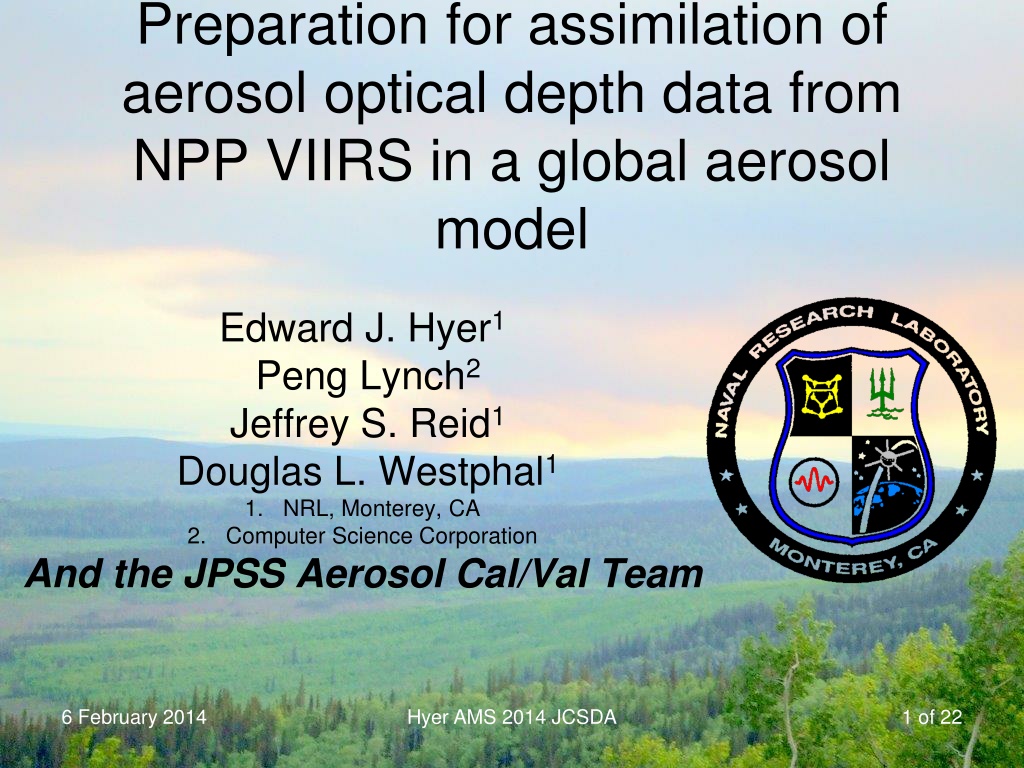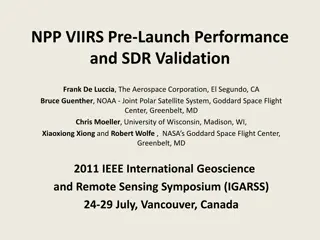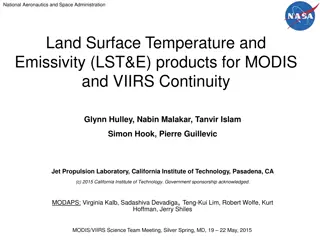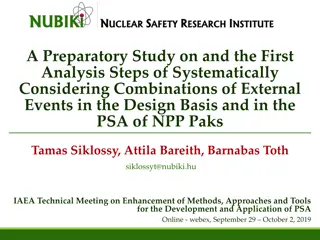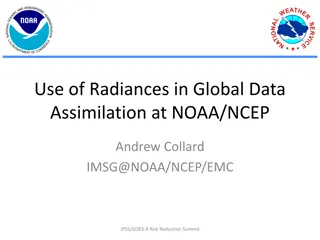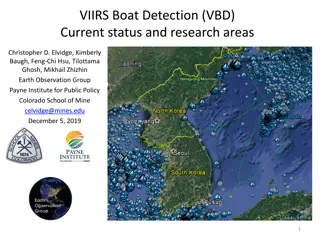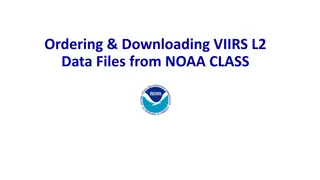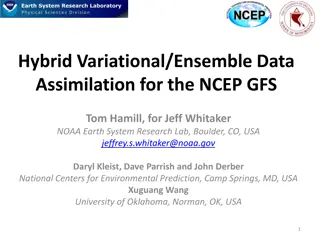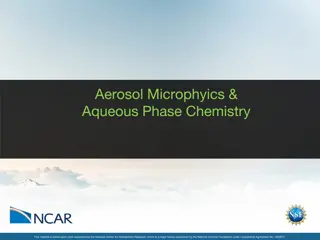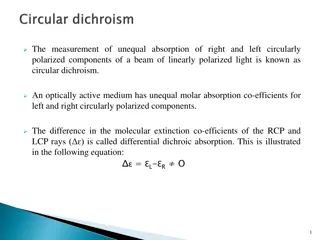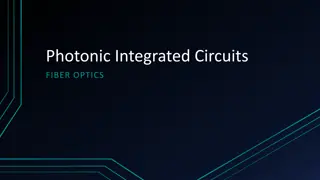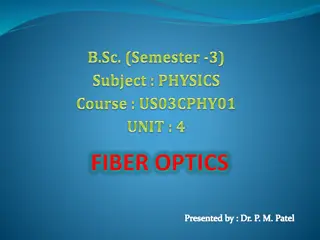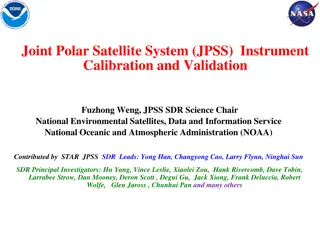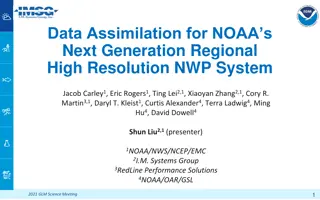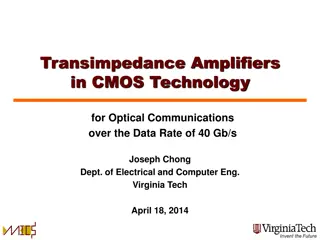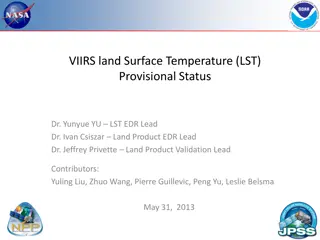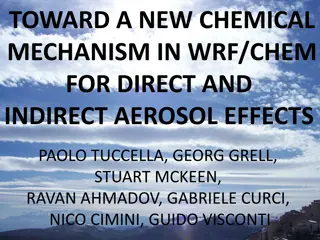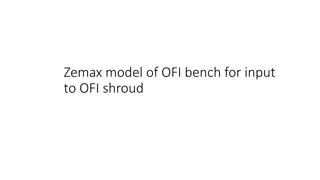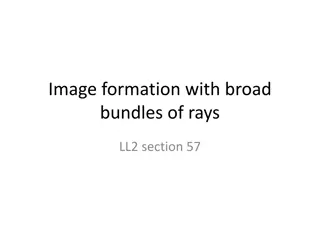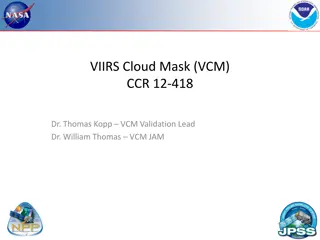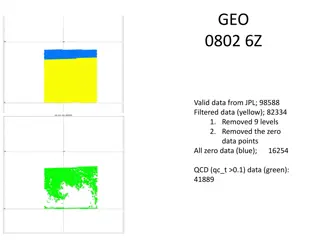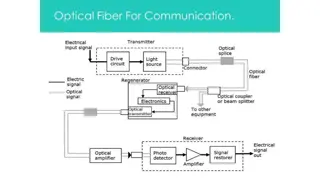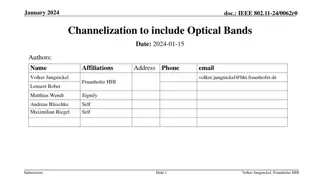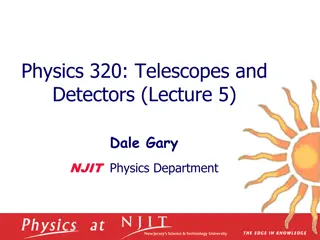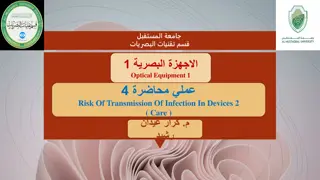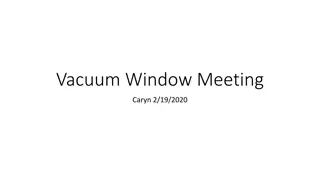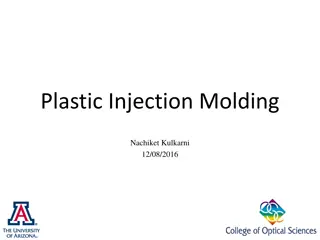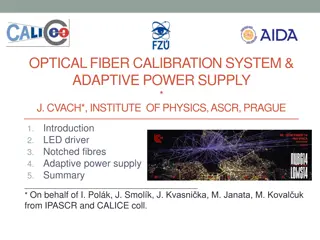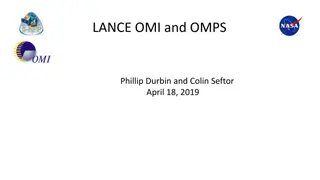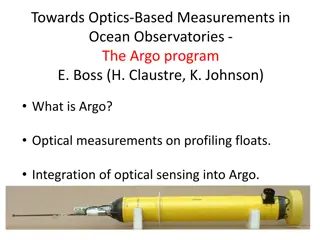Assimilation of NPP VIIRS Aerosol Optical Depth Data in Global Model
Preparation and assimilation of aerosol optical depth data from NPP VIIRS into a global aerosol model, including product descriptions, data requirements, processed observations, and conclusions on VIIRS aerosol products. Details on AOT, APSP, SM classification, and environmental data records are covered, along with comparisons to Aqua-MODIS aerosol products. Various VIIRS aerosol products, including AOT for different wavelengths, aerosol particle size parameters, and classification of aerosol types, are discussed. The talk emphasizes the importance of utilizing VIIRS data for aerosol assimilation purposes.
Download Presentation

Please find below an Image/Link to download the presentation.
The content on the website is provided AS IS for your information and personal use only. It may not be sold, licensed, or shared on other websites without obtaining consent from the author. Download presentation by click this link. If you encounter any issues during the download, it is possible that the publisher has removed the file from their server.
E N D
Presentation Transcript
Preparation for assimilation of aerosol optical depth data from NPP VIIRS in a global aerosol model Edward J. Hyer1 Peng Lynch2 Jeffrey S. Reid1 Douglas L. Westphal1 1. NRL, Monterey, CA 2. Computer Science Corporation And the JPSS Aerosol Cal/Val Team 6 February 2014 Hyer AMS 2014 JCSDA 1 of 22
In This Talk VIIRS Aerosol Product Descriptions Results from the JPSS Aerosol Cal/Val Team Data Requirements for Aerosol Assimilation Preparation of NPP VIIRS products for assimilation Observations of processed VIIRS data Conclusions / Prospects 24 January 2012 Hyer AMS 2012 SatMOC 6.2 2 of 22
VIIRS Aerosol Products (1) Aerosol Optical Thickness (AOT) for 11 wavelengths (10 M bands + 550 nm) APSP (Aerosol Particle Size Parameter) ngstr m Exponent derived from AOTs at M2 (445 nm) and M5 (672 nm) over land, and M7 (865 nm) and M10 (1610 nm) over ocean qualitative measure of particle size over-land product is not recommended! Suspended Matter (SM) classification of aerosol type (dust, smoke, sea salt, volcanic ash) and smoke concentration currently, derived from VIIRS Cloud Mask (volcanic ash) and aerosol model identified by the aerosol algorithm Only day time data Only over dark land and non-sunglint ocean 24 January 2012 Hyer AMS 2012 SatMOC 6.2 3 of 22
VIIRS Aerosol Products (2) At NOAA Comprehensive Large Array-data Stewardship System (CLASS): Intermediate Product (IP) 0.75-km pixel AOT, APSP, AMI (Aerosol Model Information) land: single aerosol model ocean: indexes of fine and coarse modes and fine mode fraction quality flags Environmental Data Record (EDR) 6 km aggregated from 8x8 IPs filtered by quality flags granule with 96 x 400 EDR cells AOT, APSP, quality flags 0.75 km SM At NOAA/NESDIS/STAR: Gridded 550-nm AOT EDR regular equal angle grid: 0.25 x0.25 (~28x28 km) only high quality AOT EDR is used 24 January 2012 Hyer AMS 2012 SatMOC 6.2 4 of 22
VIIRS EDR vs MODIS L2 Aerosol Products Aqua-MODIS 2330 km Sensor bands used for aerosol retrieval. 0.646, 0.856, 1.242, 1.629, 2.114 m Pixel size, nadir 0.5 km Pixel size, edge of scan 2 km Product resolution, nadir 10x10 km (20x20 500m pixels) Product resolution, scan edge 40x20 km Suomi NPP-VIIRS 3000 km 0.412, 0.445, 0.488, (0.550), 0.555, 0.672, 0.746, 0.865, 1.24, 1.61, 2.25 m 0. 75 km 1.2 km 6x6 km (8x8 750m pixels) (AOT and Angstrom exponent) 12.8x12.8 km Swath Width 0.411, 0.466, 0.554, Compared with MODIS, VIIRS has: Improved coverage: gap-free daily observation around the globe enabled by the wider swath Improved spatial characteristics Swath-edge pixels are 2x nadir, vs 4x for MODIS (but see Polivka poster#352) Algorithm Differences: Retrieval of AOD is done at the pixel level: aggregation of AOD values is done to produce the EDR product. Over-land algorithm (like MOD09 atmospheric correction) retrieves a single aerosol model, a mix of fine and coarse; over-ocean algorithm (like MOD04) retrieves fine and coarse mode properties separately. 24 January 2012 Hyer AMS 2012 SatMOC 6.2 5 of 22
VIIRS Aerosol Resources Two peer-reviewed publications Jackson et al. JGR 2013 Hongqing Liu et al. JGR in review NOAA VIIRS Air Quality Workshop: http://alg.umbc.edu/aqpg/viirs_workshop/ Many useful talks, special notice to talk by Rohit Mathur (EPA) on satellite products and AQ models VIIRS aerosol user s guide and fully revised ATBD (technical description): http://www.star.nesdis.noaa.gov/smcd/emb/viirs_aerosol/ documents.php 24 January 2012 Hyer AMS 2012 SatMOC 6.2 6 of 22
VIIRS Aerosol Cal/Val AERONET sun photometers are the gold standard Accuracy and precision exceed what is expected even from the best satellite products Data should not be used uncritically in regions with thin cirrus (Chew et al. Atm. Env 2011; Huang et al. JGR 2011) Right: time series of AERONET vs VIIRS AOD (blue) and MODIS-Aqua C5 AOD (red) over ocean (top) and land (bottom). Evolution of VIIRS algorithm (blue) can be seen MODIS Collection 5 (red) and VIIRS have similar accuracy after 1/24/2013 Hongqing Liu et al., JGR in review 24 January 2012 Hyer AMS 2012 SatMOC 6.2 7 of 22
VIIRS Aerosol Cal/Val Right: geographically, VIIRS and MODIS ocean retrievals have similar errors vs AERONET Pattern of biases over land is very different for VIIRS vs MODIS Collection 5 Note: MODIS Collection 6 (now in production) will have reduced biases over land Hongqing Liu et al., JGR in review 24 January 2012 Hyer AMS 2012 SatMOC 6.2 8 of 22
Navy Global Aerosol Forecasting Navy Aerosol Analysis and Prediction System (NAAPS) operational since 2005 MODIS RGB MODIS AOD Navy Variational Data Assimilation System for AOD (NAVDAS-AOD) Operational at FNMOC from September 2009 (MODIS over ocean) Global MODIS is assimilated operationally as of February 2012 NAAPS + NAVDAS NAAPS Prior J.L. Zhang et al., A System for Operational Aerosol Optical Depth Data Assimilation over Global Oceans , JGR 2008.
Preparation of Satellite Data for Assimilation Level 2 MOD04 (NASA) or VAOOO EDR (JPSS) data is generated by upstream data centers spatial resolutions of a few km 14 April 2011 Hyer ISRSE34 Sydney 10 of 25
Preparation of Satellite Data for Assimilation AOD data process developed by NRL and UND, includes Aggressive cloud filtering Ocean wind speed correction Land albedo correction land surface and snow filters Microphysical AOD bias correction 0.5 degree product distributed to public via NASA LANCE (MxDAODHD) This is the process developed for MODIS Collection 4&5 How much pre-processing will be required for Suomi NPP VIIRS? 14 April 2011 Hyer ISRSE34 Sydney 11 of 25
NPP VIIRS pre-processor 1-degree, 6-hour Operational NAAPS now 1/3 , 1 used for testing fullQA uses information packaged with EDR granules QA = Good (highest EDR QA value) Cloud mask, cloud proximity, snow flags, glint flags No textural filtering (this is a cal/val experiment, not an operational candidate) Results shown using 12 months of data 2013.01.24.00 to 2014.01.12.00
VIIRS fullQA coverage vs NRL-UND Level 3 MODIS-- Land NPP VIIRS NPP VIIRS MODIS AQUA MODIS AQUA NRL/UND Level 3 MODIS is stringently filtered VIIRS potentially delivers much more data vs 1 MODIS Almost as much as 2 MODIS
VIIRS fullQA AOD vs NRL-UND Level 3 MODIS-- Ocean NPP VIIRS MODIS AQUA Anomalous high AOD in polar regions Sea ice problem, cal/val team is researching a fix VIIRS background AOD is noticeably higher (+0.05) Asian outflow feature is similar
VIIRS fullQA AOD vs NRL-UND Level 3 MODIS-- Land NPP VIIRS MODIS AQUA VIIRS AOD is generally higher in low-AOD areas, lower near sources VIIRS fullqa has AOD data in areas filtered from NRL/UND Level 3 E.g. Himalayas
VIIRS vs MODIS Near Sources MODIS Aqua 3 August 2013 NPP VIIRS NASA LANCE Worldview MODIS AQUA Massive midsummer Siberian fires Episodic, intense plumes Signal in VIIRS is much lower than MODIS
VIIRS vs MODIS High AOD Exclusion in EDR leads to truncation in aggregate IDPS VIIRS Aerosol algorithm does not retrieval optical depths above 2 This results in a truncation effect on averaged data NPP VIIRS 1 AOD MODIS-Aqua NRL/UND1 AOD NPP VIIRS MODIS AQUA Data in region shown from 2013.07.23 to 2013.08.23 Suomi NPP VIIRS fullqa vs MODIS-Aqua C5 NRL/UND L3
VIIRS vs MODIS AOD Low AOD Truncation effect over land Data in region shown from 2013.05.01 to 2013.08.01 MODIS-Aqua retrieves negative AODs (down to -0.05) over land NRL/UND post- processing averages with negatives, then truncates to minimum value MODIS-Aqua NRL/UND1 AOD NPP VIIRS 1 AOD VIIRS IDPS Processing discards negative AOD values Truncation effect after averaging 24 January 2012 Hyer AMS 2012 SatMOC 6.2 18 of 22
Results and Next Steps NPP VIIRS AOD requires additional filtering of EDR to improve analysis and forecast Cal/Val Team has further improvements to over-land AOD data underway Additional analysis of over- ocean VIIRS AOD data is needed See Jianglong Zhang s poster #708 on clouds in MODIS, MISR Thank you to sponsors: JPSS, NASA AQAST, NRL
